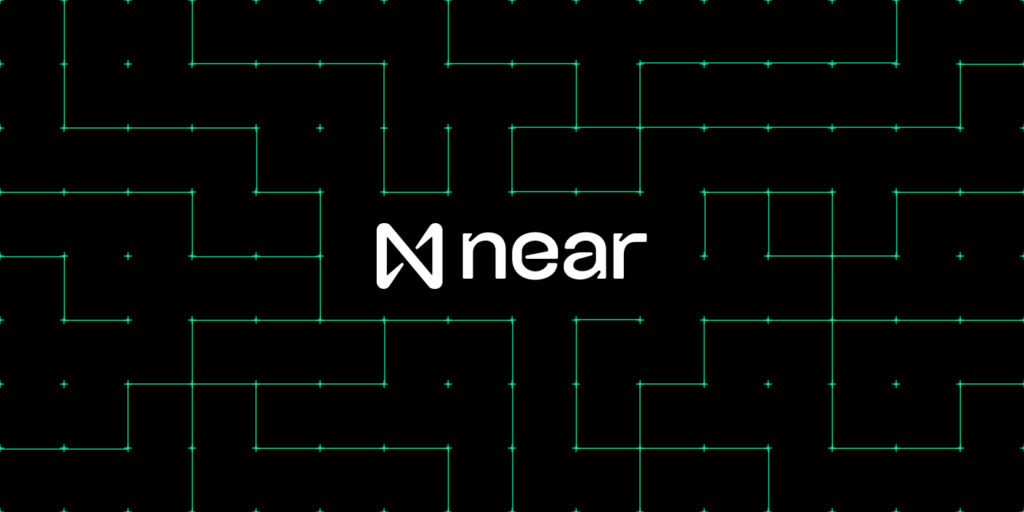Footnotes:
1. See, e.g., Running on Empty: A Proposal to Fill the Gap Between Regulation and Decentralization, Hester M. Peirce, speech on February 6, 2020 (available here), where Peirce discusses the current challenges in the US with the lack of legal clarity around decentralization and the outdated application of the Howey Test to crypto assets. See also, e.g., The SEC, Digital Assets and Game Theory, Yuliya Guseva, 46 J. Corp.. L. 629-679 (2021)(available here), which suggests that the SEC’s regulation via enforcement actions approach has broken the ‘fabric of cooperation’ between industry participants and the SEC and is therefore leading to bad outcomes for all market participants. See further testimony before the US House Financial Services Subcommittee on Digital Assets, Financial Technology, and Inclusion, hearing entitled Coincidence or Coordinated? The Administrator’s Attack on the Digital Asset Ecosystem, Dr. Tonya M. Evans, March 9, 2023 (available here), where Evans emphasizes the difficulty in innovating and building in Web3 given the present uncertain regulatory climate in the US.
2. MiCA will primarily regulate centralised intermediaries/crypto-asset service providers in a relatively proportionate manner, enabling so-called ‘passporting’ across all member states and largely carving out decentralised initiatives, demonstrating a clear recognition by EU lawmakers and regulators of the current and future importance of our industry. MiCA isn’t perfect – the provisions governing stablecoins are unwieldy and challenging, the bloc’s intended approach to decentralised initiatives remains largely unknown and some other legislative developments are troubling (see footnote 3) – however, it represents a meaningful launching-off point for engagement and future iteration, and will provide much-needed clarity and consistency across the world’s largest single market.
3. See, e.g., Proposal for a Regulation on Information Accompanying transfers of funds and Certain Crypto-Assets, Piotr Bąkowski, European Parliamentary Research Service, 20 July 2021 (available here), which proposes to expand travel rule obligations to all crypto-asset service providers (CASPS) and require them to collect identifying data in respect of all transactions with no minimum transaction threshold (while the TradFi equivalent rule has a €1k minimum transaction threshold). See also, e.g., Proposal for a Regulation of the European Parliament and of the Council on harmonised rules on fair access to and use of data (Data Act), European Commission, 23 February 2022 (available here), which proposes mandating that certain smart contracts be ‘reversible’ and/or contain a so-called ‘kill switch’ in the ‘Internet of Things’ (IOT) context. See also, e.g., “Decentralised” or “disintermediated” finance: what regulatory response?, April 2023, the Autorité de Contrôle Prudentiel et de Résolution (ACPR) (available here), which proposes, in effect, to ‘re-intermediate’ DeFi (amongst other things) by requiring DeFi projects to incorporate in the EU, and to classify DeFi front-ends as regulated intermediaries with data collection and monitoring obligations.
4. The Swiss Financial Market Supervisory Authority (FINMA) published ‘ICO Guidelines’ in February 2018 (available here), which set out a relatively straightforward digital asset classification framework with the aim of providing clarity to market participants.
5. The consultation indicates an approach inspired partly by MiCA — i.e. regulate centralised intermediaries based on their activities, but recognise that decentralised initiatives will require a different approach — and asks the industry to provide views and feedback to inform the UK Government’s approach. This degree of engagement with industry is extremely encouraging. The NEAR Foundation will be submitting a consultation response and we would encourage all industry stakeholders to do the same. The consultation paper is available here.
6. The Law Commission’s consultation paper dealing with law reform proposals in the context of digital assets and personal property rights is available here, and the Law Commission’s consultation paper on DAOs can be found here.
7. The Annual Report of the Council of Economic Advisors, 20 March 2023 (available here), p. 238. (“[C]rypto assets to date do not appear to offer investments with any fundamental value, nor do they act as an effective alternative to fiat money, improve financial inclusion, or make payments more efficient; instead, their innovation has been mostly about creating artificial scarcity in order to support crypto assets’ prices—and many of them have no fundamental value.”)
8. See, e.g., Coin Centre’s excellent commentary on the Treasury DeFi risk assessment. Peter Van Valkenburgh, Treasury’s new DeFi risk assessment relies on ill-fitting frameworks and makes potentially unconstitutional recommendations, 7 April 2023 (available here).
9. See, e.g., Operation Choke Point 2.0: The Federal Bank Regulators Come for Crypto, Cooper & Kirk LLP (available here).
10. See, e.g., Elizabeth Warren is building an anti-crypto army. Some conservatives are on board, Zachary Warmbrodt, Politico, 14 February 2023 (available here).
11. See, e.g., Due to SEC Inaction, Registration is Not a Viable Path for Crypto Projects, Rodrigo Seira, Justin Slaughter, Katie Biber, Paradigm (available here), which notes that despite SEC Chair Genlser repeatedly telling projects to ‘come in and register’, current US securities laws are incompatible with various features of Web3, making registration a practical impossibility for Web3 projects.
12. Only this week, the SEC commenced an enforcement action against Bittrex, alleging, among other things that the Bittrex Platform “merged three functions that are typically separated in traditional securities markets—those of broker-dealers, exchanges, and clearing agencies—despite the fact that Bittrex has never registered with the SEC as a broker-dealer, national securities exchange, or clearing agency,” and arguing that five tokens, including Algorand and DASH, are securities. Securities and Exchange Commission v Bittrex Inc., (WD Wash) (Complaint), No 2:23 cv 00580. See also e.g., SEC Cryptocurrency Enforcement Update, Cornerstone Research 2022 (available here), according to which, in 2022 alone the SEC brought 30 crypto-related enforcement actions against Web3 projects. In spite of the numerous enforcement actions, the SEC has still not provided any material guidance to the industry to foster regulatory compliance. For a longer list of SEC crypto asset enforcement actions, please refer to the SEC’s summary available here.
13. See, e.g. Tulip Trading Ltd v Van der Laan and Ors [2023] EWCA Civ 83, a case currently in the High Court of England & Wales (following the successful appeal of a High Court order for summary judgment which was overturned by the Court of Appeal) that considers whether certain core developers of various Bitcoin networks owe network users either a fiduciary duty and/or a tortious duty of care, and therefore is one of the most important cases to date in the context of developer duties/liability.
14. See e.g., 31 U.S.C. § 5312(a)(2) (defining a financial institution as an entity encompassing various organizations and businesses, including but not limited to banks, credit unions, investment companies, broker-dealers, insurance companies, currency exchanges, and money transmitters, or deemed to engage in similar activities). Being classified as a ‘Financial Institution’ from a US law perspective subjects a person to (amongst other things) various onerous information collection and reporting duties, including a duty to: (1) identify and record personal information of any person who uses the relevant software/service; (2) develop anti-money laundering (AML) programmes that can block persons from using the relevant software/service where there are suspicions of illegal activity; and (3) file reports about users of the relevant software/service to the government.
15. See, e.g., the Digital Asset Anti-Money Laundering Act proposed in December last year in the US by Senators Warren and Marshall (the “Warren/Marshall Act”), which would significantly erode the privacy of anyone using or supporting public blockchain infrastructure; See also, e.g., Coin Centre’s post here for further analysis. See further, e.g., the US Infrastructure Bill which contains two particularly problematic revisions to the US Tax Code: (1) widening the definition of ‘broker’ so that it captures non-custodial service providers and transfers involving self-hosted wallets; and (2) an adjustment to include digital assets within provision §6050I, with the result that businesses would need to collect information about counterparties whenever they receive digital assets worth more than $10,000 in value. See also footnote 3 re ACPR’s proposals to treat DeFi front-ends as intermediaries which would require information collection and reporting with respect to users.
16. Zero-Knowledge (ZK) proofs are a cryptographic technique that enable one party to prove to another party that they have knowledge of a certain piece of information, without revealing the underlying information itself. ZK proofs can enhance privacy and efficiency in KYC and AML compliance, as they can enable individuals to prove that they have already completed KYC with a trusted provider without disclosing their personal data to other parties. ZK proofs can also allow individuals to prove that they are not on any sanctions or watch lists without revealing their identity or location. ZK proofs can reduce the risk of identity theft, data breaches, and fraud, as well as lower the operational costs and complexity of KYC and AML processes. See, e.g., zkKYC – A solution concept for KYC without knowing your customer, leveraging self-sovereign identity and zero-knowledge proofs, Pieter Pauels, Smart Contract Research Forum, July 2021 (available here).
17. For example, both FTX and Alameda were (extremely) centralised digital asset intermediaries, performing functions and offering services to customers in a bundled manner, and it is critical to recognise that: (1) the market contagion following the collapse of FTX/Alameda was significantly amplified precisely because of the centralised, opaque nature of the institutions (as well as alleged criminal behaviour); and (2) the contagion across decentralised ecosystems, which are open, transparent, and disintermediated by design, was notably less severe precisely because of these unique Web3 features. In relation to (2) see, e.g., Report of the Cotnell SC Johnson College of Business, 2022 Cornell Roundtable Forum on Digital Assets, (available here).
18. From a policy perspective, a key element of promoting autonomy involves the prevention of concentrations of power amongst a small number of centralised service providers/market actors that bundle various services together, something that has been a feature of the industry to date. See, e.g., Policy Paper Series (Part 1): Reframing How We Look at a Crypto Legislative Solution, Delphi Digital & LeXPunK, 17 March 2023 (available here)), which proposes a regulatory framework for public permissionless blockchain networks focussing on the regulation of systemically important vertically-integrated centralised actors.
19. The NEAR Digital Collective (NDC) is a community grassroots initiative in the NEAR ecosystem that is working to support the ongoing development of sustainable governance infrastructure and the ecosystem’s continuing decentralisation. The NEAR Foundation supported the NDC’s recent launch of a decentralised treasury that represents an important step in the NEAR ecosystem’s ongoing decentralisation. See, e.g., NEAR Digital Collective Legal Framework, 21 March 2023 (available here).
20. The Warren/Marshall Act would classify all providers of self-hosted wallets (and effectively anyone else who maintains public blockchain infrastructure) as ‘Financial Institutions’, subjecting them to a host of onerous obligations that are in practice impossible to comply with, and would significantly constrain the development and use of self-hosted products and services. See footnote 14 for more detail on the onerous obligations of ‘Financial Institutions’ from a US perspective. See also footnote 3 re ACPR’s proposals to treat DeFi font-ends as intermediaries which would require information collection and reporting with respect to users.
21. The Blockchain Operating System (BOS) serves as a single platform that developers can build into and users can interact on, including by browsing and discovering Web3 products such as crypto exchanges, non-fungible token (NFT) galleries and social networks. The BOS will be compatible with all blockchains (currently supporting NEAR protocol and Ethereum Virtual Machine chains), with NEAR protocol acting as the common entry point. The BOS offers a decentralized and composable and front end framework for building, launching, and using dApps, while leveraging common user experience frameworks such as profiles, notifications, and searching.For more information on the BOS, see, e.g., Near Protocol Announces the Blockchain Operating System, NEAR Foundation, 2 March 2023 (available here); Near Protocol Starts ‘Blockchain Operating System’ to Focus on User Experience, Lyllah Ledesma, Coindesk, 2 March 2023 (available here).
22. For example, Rule 3b-16(a)(2), Securities Exchange Act of 1934, 15 U.S.C. §§ 78a-78qq (2012). defines an exchange as an organization that (1) brings together the orders for securities of multiple buyers and sellers; and (2) uses established, non-discretionary methods under which such orders interact with each other, and the buyers and sellers entering such orders agree to the terms of the trade. The SEC’s proposed amendment to Rule 3b-16(a)(2) replaces the phrase “uses established, non-discretionary methods,” with “makes available established, non-discretionary methods,” which could inadvertently capture “developers working with all manners or protocols, front end systems, and smart contracts,” along with persons who “operate…’validators’ on the underlying blockchain where the AMM is stored”. See Reg-X-Proposal-An-Expempt-Offering-Framework-for-Token-Issuances, LeXpunK-Army, 7 March 2023 (available here).
23. The “Token Safe Harbor Proposal 2.0” framework proposed by SEC Commissioner Hester Peirce includes measures applying to validators, including “information, detailing…the process for validating transactions.” See Token Safe Harbor Proposal 2.0, Commissioner, Hester M. Peirce, 13 April 2021 (available here); See also, e.g., Safe Harbor X, LeXpunK-Army, 7 March 2023 (available here) (proposing a rule that would provide an exemption for the distribution of autonomous cryptotokens to users and builders of autonomous software systems, based on the Token Safe Harbor Proposal 2.0, but with some modifications and additions, such as requiring semi-annual updates, an exit report, guidance on decentralization criteria, and clarifying the definition and scope of autonomous cryptotokens and autonomous cryptosystems). These safe harbor proposals would operate to effectively provide projects with conditioned routes to compliance, based on each project meeting various requirements (including disclosures, smart contract audits, and degree of decentralisation).
24. In any principles-based regulatory system, regulators are generally afforded wide discretion to interpret and enforce regulations in line with desired policy outcomes. Where that discretion is misused or otherwise not exercised in good faith, those systems break down with the result that innovation is stifled and policy goals are undermined.
25. See, e.g., Community Policy Initiative No. 1, Polygon Labs, 11 April 2023 (available here).
26. See footnote 23 for more information on potential safe harbor implementations in the US.
27. Model law proposals are draft laws or regulations that are proposed by regulators or other authorities to address specific issues or challenges in a given domain. Model law consultations and proposals can serve as guidance or inspiration for other jurisdictions that are considering similar reforms or initiatives. See, e.g., Model Law For Decentralized Autonomous Organizations, Constance Choi, Primavera De Filippi, Rick Dudley, Silke Not Elrifia, Coalition of Automated Legal Applications, 2021 (available here); Proposal for a Regulation on Markets in Crypto-assets, European Commission, September 2020 (available here) (proposing a regulation that would establish a comprehensive framework for crypto-assets in the European Union, which eventually led to MiCA); Future financial services regulatory regime for cryptoassets: Consultation and call for evidence, UK Treasury, February 2023 (available here) (proposing a new regulatory regime for cryptoassets in the UK).
28. See, e.g.,Brief of LexpunK as Amicus Curiae Regarding Plainitff’s Motion for Alternative Service, LeXpunK, CFTC v. Ooki DAO et al., No. 3:22-cv-05416-WHO (N.D. Cal. Oct. 17, 2022) (available here) (challenging the CFTC’s motion for alternative service against token holders of Ooki DAO, a decentralized crypto platform, on the basis that DAOs are not legal entities or persons, but rather collections of smart contracts that run autonomously on a blockchain without any central authority or control). See also, e.g., Brief of Coinbase Global Inc. as Amicus Curiae in Support of Defendants’ Motion to Dismiss, Coinbase Global Inc., SEC v. Ripple Labs Inc. et al., No. 1:20-cv-10832-AT-SN (S.D.N.Y. Oct. 31, 2022) (available here) (arguing that the SEC failed to provide fair notice to market participants that XRP was considered a security); See also, e.g., Brief of Blockchain Association as Amicus Curiae in Support of Defendants’ Motion to Dismiss, Blockchain Association, SEC v. Wahi et al., No. 2:22-cv-02101-RSL (W.D. Wash. Feb. 13, 2023) (available here) (expressing support for the Defendants’ argument for dismissal and claiming that the SEC exceeded its authority by declaring certain tokens to be securities without prior findings and attempting to punish absent third parties who had no meaningful opportunity to defend themselves); See also, e.g.,Brief of Blockchain Association and DeFi Education Fund as Amici Curiae in Support of Plaintiffs’ Motion for Partial Summary Judgment, Blockchain Association & DeFi Education Fund, Van Loon v. Dep’t of the Treasury, No. 1:23-cv-00312-RP (W.D. Tex. April 12, 2023) (available here) (challenging OFAC’s sanctions on Tornado Cash, a privacy-protecting software protocol on Ethereum, as being based on a misunderstanding of blockchain technology and violating the Administrative Procedure Act).



